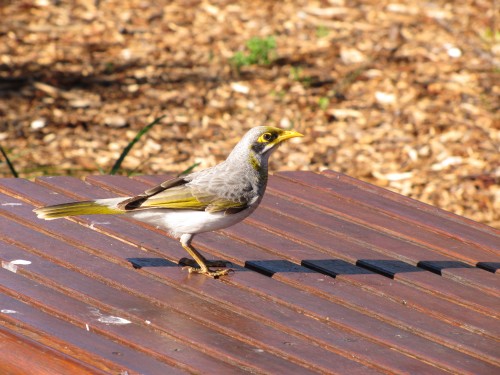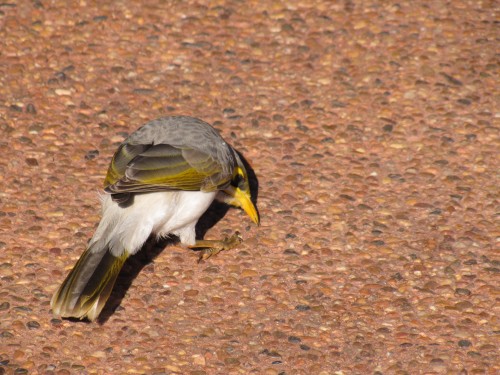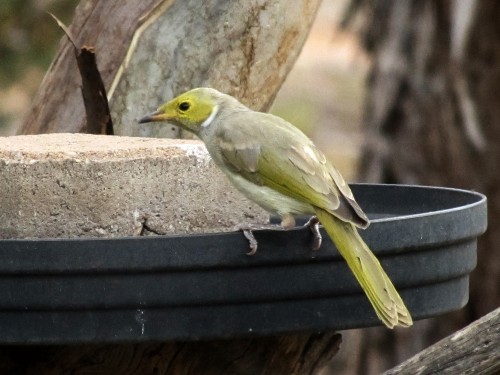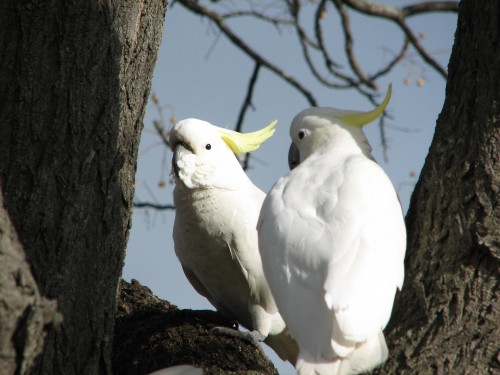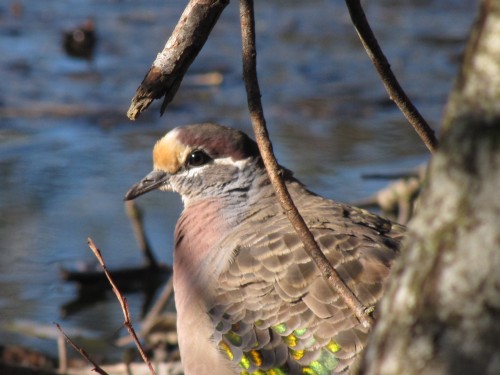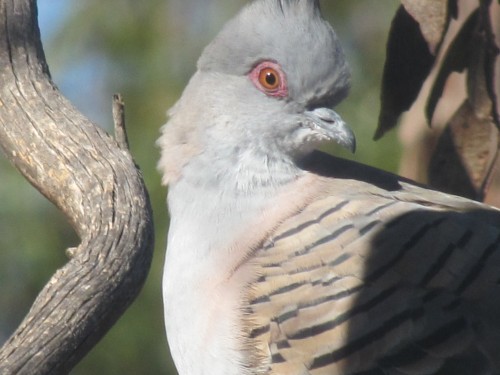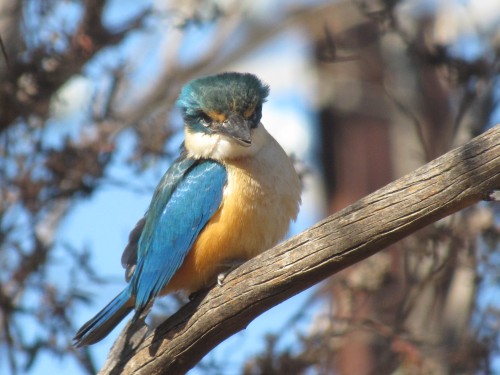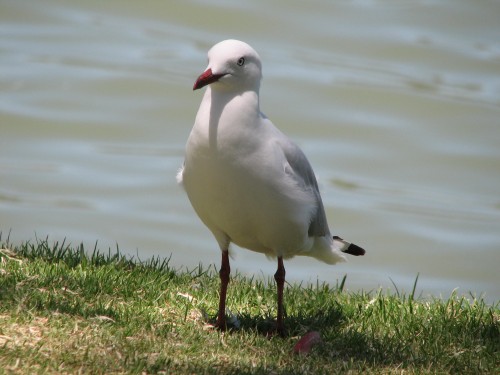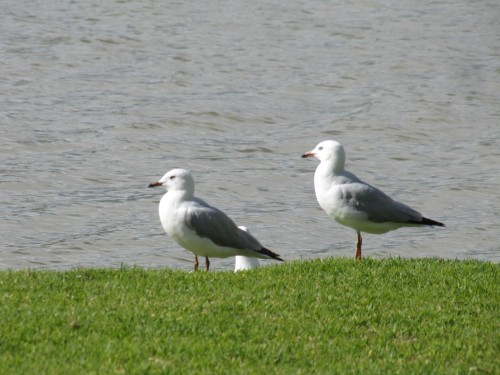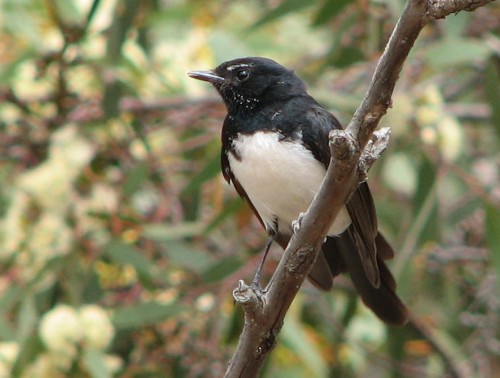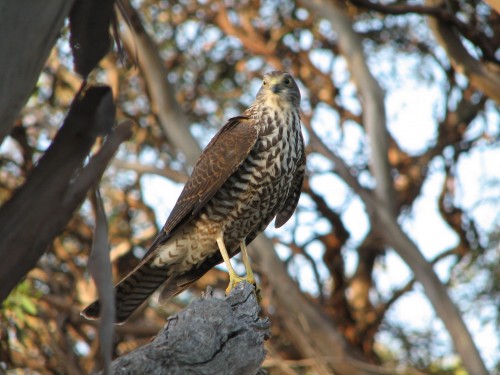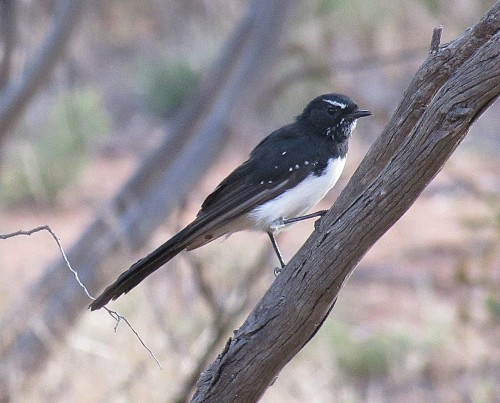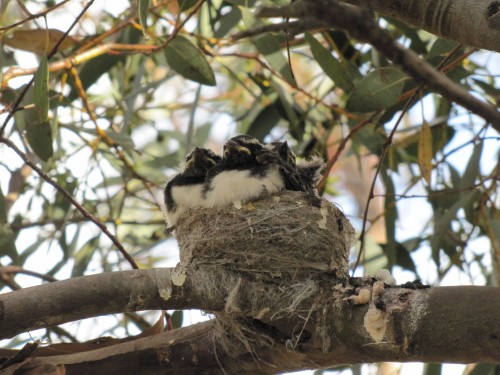Cheeky Miner birds at Dubbo
One of the things I noticed on our visit to the Western Plains Zoo in Dubbo was the number of honeyeaters. The zoo enclosures and the road visitors take on their tour feature many local plants, especially eucalypts. A good number of these are flowering at any one time and this attracts the nectivorous birds such as honeyeaters.
One of the honeyeater species which came up close and personal was the Yellow-throated Miner. One of them is featured in today’s photos. We treated ourselves to an ice-cream from the visitor centre and sat in the picnic area nearby to enjoy our treat. This miner came up really close, checking out if we had any morsels to share with it. The close proximity of the bird made photography easy.
Yellow-throated Miners are found over much of Australia except for the wetter eastern and southern coastal regions and Tasmania. A similar species is the Noisy Miner.
Further reading:
- Time for a sweet break – another photo of a Miner at the zoo
- Noisy Miner Murray Bridge
- Great birding moments
- Miners v Mynas
A close encounter
Quite frequently I have close encounters with our bird life, especially those which are resident in our garden and on our five acre block on the outskirts of Murray Bridge in South Australia. Sometimes I have the camera with me, sometimes I have to race off and get the camera. And then… there are those occasions when the bird flies off immediately.
Yesterday morning I was just finishing having breakfast, reading the daily paper and doing the cryptic crossword (yes, I solved it). I just looked up to check the bird bath – the one shown in the photo above – when a White-plumed Honeyeater landed on the window sill less than 50cm from where it was sitting. After staying for all of 5 seconds it flew off. No time to get the camera.
Then this morning the same thing happened, but this time a small movement on my part sent the bird flying off without actually landing.
Mmm… that makes me think. I wonder if this particular bird is coming to the window on a regular basis? I wouldn’t be surprised if it was coming to snaffle an insect or a spider lurking around the window frame. Or perhaps it was after some spider’s web to softly line a new nest?
(Embarrassed silence.)
I probably – no definitely – need to clear all the spiders’ webs around the house – but then, I am trying to be ‘bird friendly’. (Notice how I neatly side-stepped doing some house maintenance?)
For more articles about my close encounters with birds click here.
I have included a few more photos of close encounters with birds below.
Silver Gulls behaving oddly
This afternoon while watching the cricket on television my wife called to me from the garden. A flock of about 20 birds were circling in the air above our five acre property here in Murray Bridge, South Australia. I quickly grabbed my binoculars and headed outside.
For the next ten minutes or so the loose flock of Silver Gulls soared on the breeze over head, circling around many times. They kept this up mostly silently with just an occasional soft contact call – nothing like their normal raucous, far reaching cry which is a quite familiar call. The whole time they stayed overhead near the shed, circling constantly over about a fifty metre radius. I am quite puzzled as to what they were up to. Perhaps they were feeding on flying insects but I couldn’t see exactly what they were doing, despite being able to observe individuals as they flew. Strange.
Silver Gulls are widespread throughout Australia and are very common along the entire coastline, along river courses, around lakes, dams, reservoirs, swamps and any suitable habitat and are usually associated with water, but not always. We are about five kilometres from the River Murray but we have some fly over our property every month of so, sometimes in large flocks of 50 to 100, usually quite high in the sky. This is the first time I can recall them coming so close to the ground; the flock stayed about 5-10 metres above the ground at all times.
A brave Willie Wagtail
A few days ago I wrote about our feisty Willie Wagtail (click here to read the article). I made some comments about some of the birds I had seen our resident Willie Wagtails chasing off from near their nest. They can get very protective of the nest, the eggs and especially the young once they hatch.
Yesterday I looked out of the window and saw it again attacking a much larger bird. Because of the distance – about 40 metres – I was not sure what it actually was, but it was ducking every few seconds as the Willie Wagtail attacked its head. Fortunately my binoculars were within reach but as I grabbed them the bird flew off to another part of the garden near the front of the house with the noisy Willie Wagtail snapping at its tail.
I went to the sun room and looked out at a bush nearby. The much larger Collared Sparrowhawk was cowering in bush, trying valiantly to escape from this angry little bird. I was able to get a good view of the hawk before it flew off again, hotly pursued by the Willie Wagtail until it was well away from the nest.
Their resilience and sheer bravery in the face of great odds always amazes me. Quite the inspirational little bird.
The photos on this post were taken some time ago. I should keep my camera handy too.
Further reading:
A feisty Willie Wagtail
One of the most recognisable Australian birds would be the Willie Wagtail (see photo above). It is also one our most endearing birds, a favourite of many people. It loves occupying spaces close to human habitation, especially our gardens. We have a resident pair in our garden and we see them on a daily basis.
I have always known that Willie Wagtails can also be aggressive, feisty little birds. This has been in evidence in recent days in our garden, illustrated by the following incidents when it has attacked other, much larger species:
- Australian Magpies: our resident Magpies must be nesting somewhere on our five acre property here in South Australia. The male is consistently chasing almost every bird which comes near. Fortunately us humans are never swooped. Last Saturday, however, the roles were reversed. It was the magpie being chased – by a very aggressive and angry Willie Wagtail snapping at its tail as it tried to escape its wrath.
- Little Ravens: We often have small flocks of Little Ravens in our garden, usually up to about six or so. Yesterday I heard and then saw three ravens in the large mallee trees at the back of our home. As usual, they were cawing loudly. This attracted the attention of the Willie wagtail who rapidly came into the situation and began snapping at a raven’s feathers, tail and head, harassing the poor bird mercilessly. As soon as one raven flew off with a few caws in protest, the Willie Wagtail would turn its attention to another until all three were well and truly seen off the property.
Wedge-tailed Eagles
I have only observed Australia’s largest bird of prey, the Wedge-tailed Eagle, on one occasion here in over 30 years. It is, however, quite a common bird throughout this part of the country and I have seen the species on many occasions in my travels. It always amazes when the tiny Willie Wagtail – not much bigger than a humble House Sparrow – aggressively attacking the eagle, snapping at it and even pecking at its back while hitching a ride. Such courage – one snap of the eagle’s beak would dismiss the wagtail permanently.
The reason for this aggressive attitude:
Normally the Willie Wagtails are friendly, docile birds. They will allow all manner of birds to cohabit happily in our garden. The reason for this sudden change of attitude is a simple little nest, like the one shown below. The photo below was taken a few years ago because I don’t want to disturb the mother Willie wagtail. She is currently sitting on two lovely eggs. She is not even afraid to come after me when I get near to the nest, snapping near my head until I move a reasonable distance from the nest.
The weeds near the nest will just have to wait a few weeks to be mown. Sigh.
I recently wrote about other birds nesting in our garden (click here).
